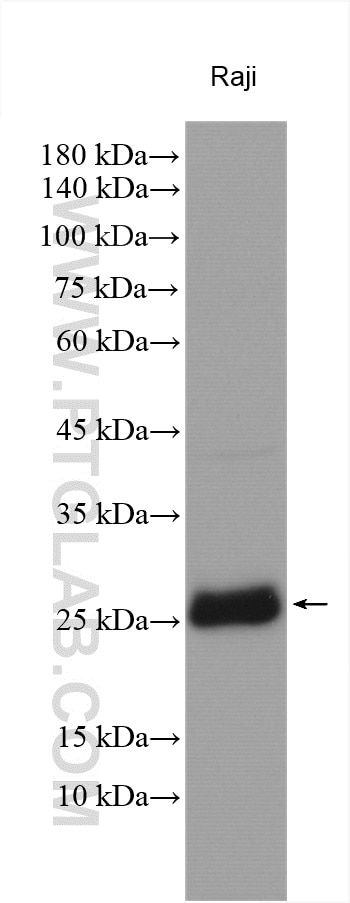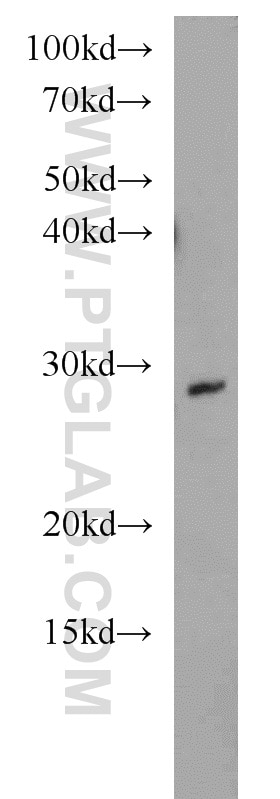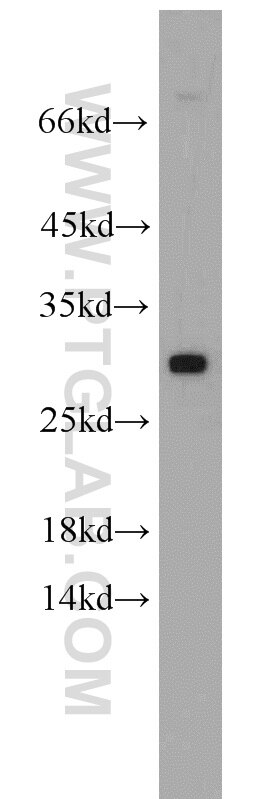WBS15/LAT2 Polyklonaler Antikörper
WBS15/LAT2 Polyklonal Antikörper für WB, ELISA
Wirt / Isotyp
Kaninchen / IgG
Getestete Reaktivität
human, Maus
Anwendung
WB, ELISA
Konjugation
Unkonjugiert
Kat-Nr. : 11008-1-AP
Synonyme
Geprüfte Anwendungen
| Erfolgreiche Detektion in WB | Raji-Zellen, humanes Hirngewebe, humanes Plazenta-Gewebe |
Empfohlene Verdünnung
| Anwendung | Verdünnung |
|---|---|
| Western Blot (WB) | WB : 1:1000-1:4000 |
| It is recommended that this reagent should be titrated in each testing system to obtain optimal results. | |
| Sample-dependent, check data in validation data gallery | |
Produktinformation
11008-1-AP bindet in WB, ELISA WBS15/LAT2 und zeigt Reaktivität mit human, Maus
| Getestete Reaktivität | human, Maus |
| Wirt / Isotyp | Kaninchen / IgG |
| Klonalität | Polyklonal |
| Typ | Antikörper |
| Immunogen | WBS15/LAT2 fusion protein Ag1454 |
| Vollständiger Name | linker for activation of T cells family, member 2 |
| Berechnetes Molekulargewicht | 27 kDa |
| Beobachtetes Molekulargewicht | 27-30 kDa |
| GenBank-Zugangsnummer | BC009204 |
| Gene symbol | LAT2 |
| Gene ID (NCBI) | 7462 |
| Konjugation | Unkonjugiert |
| Form | Liquid |
| Reinigungsmethode | Antigen-Affinitätsreinigung |
| Lagerungspuffer | PBS with 0.02% sodium azide and 50% glycerol |
| Lagerungsbedingungen | Bei -20°C lagern. Nach dem Versand ein Jahr lang stabil Aliquotieren ist bei -20oC Lagerung nicht notwendig. 20ul Größen enthalten 0,1% BSA. |
Hintergrundinformationen
WBS15, also named as LAB, NTAL, WBSCR15, WBSCR5and LAT2 (Linker for activation of T-cells family member 2; not SLC7A8/LAT2), is involved in FCER1 (high affinity immunoglobulin epsilon receptor)-mediated signaling in mast and myeloid cells. WBS15 is involved in BCR (B-cell antigen receptor)-mediated signaling in B-cells. It is located in the Williams-Beuren syndrome (WBS) critical region. WBS15 has two isoform with MW 27-30 kDa and 12 kDa.
Protokolle
| PRODUKTSPEZIFISCHE PROTOKOLLE | |
|---|---|
| WB protocol for WBS15/LAT2 antibody 11008-1-AP | Protokoll herunterladen |
| STANDARD-PROTOKOLLE | |
|---|---|
| Klicken Sie hier, um unsere Standardprotokolle anzuzeigen |




